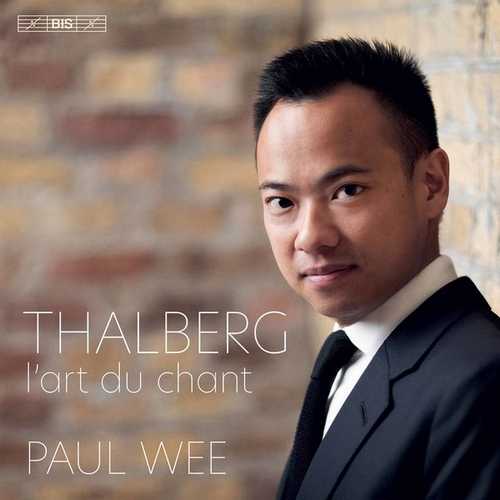
Composer: Sigismond Thalberg
Performer: Paul Wee
Number of Discs: 2
Format: FLAC (tracks)
Label: Bis
Release: 2020
Size: 4.45 GB
Recovery: +3%
Scan: yes
L’Art du chant appliqué au piano, Op. 70
01. No. 1, A te, o cara (After Bellini’s “I puritani”)
02. No. 2, Tre giorni (After Ciampi) [Attrib. Pergolesi’s P. 106]
03. No. 3, Adelaide (After Beethoven’s Op. 46)
04. No. 4, Pietà, signore (Attrib. Stradella)
05. No. 5a, Lacrimosa (After Mozart’s K. 626)
06. No. 5b, Sull’aria (After Mozart’s K. 492)
07. No. 6, Perchè mi guardi e piangi (After Rossini’s “Zelmira”)
08. No. 7, Bella adorate incognita (After Mercadante’s “Il giuramento”)
09. No. 8, Nel silenzio fra l’orror (After Meyerbeer’s “Il crociato in Egitto”)
10. No. 9, Einsam bin ich nicht alleine (After Weber’s J. 279)
11. No. 10, Der Müller und der Bach (After Schubert’s D. 795)
12. No. 11, Schelm, halt fest! (After Weber’s J. 277)
13. No. 12, Il mio tesoro (After Mozart’s K. 527)
14. No. 13, Sérénade (After Rossini’s “Il barbiere di Siviglia”)
15. No. 14, La dove prende (After Mozart’s K. 620)
16. No. 15, Barcarolle (After Donizetti’s “Gianni di Calais”)
17. No. 16a, Protegga il giusto cielo (After Mozart’s K. 527)
18. No. 16b, Là ci darem la mano (After Mozart’s K. 527)
19. No. 17, Sérénade (After Grétry’s “L’amant jaloux”)
20. No. 18, Assisa a piè d’un salice (After Rossini’s “Otello”)
21. No. 19, Casta diva (After Bellini’s “Norma”)
22. No. 20, Voi che sapete (After Mozart’s K. 492)
23. No. 21, Fröhliche Klänge, Tänze, Gesänge (After Weber’s J. 291)
24. No. 22, Dafydd y garreg wen
25. No. 23, Ein Mädchen, das auf Ehre hielt (After Haydn’s Hob. XXI:3)
26. No. 24, Fenesta vascia (After Cottrau)
Schubert Lieder (3) transribed for solo piano, Op. 79a
27. No. 1, Täuschung (After Schubert’s D. 911)
28. No. 2, Der Neugierige (After Schubert’s D. 795)
29. No. 3, Die Post (After Schubert’s D. 911)
30. Auf Flügeln des Gesanges (after Mendelssohn)
31. Pieces (10), Op. 36: . No. 3. Mi manca la voce (from Rossini’s ‘Mose’)
International lawyer by day and piano virtuoso by night, Paul Wee made his recording début in 2019 with some of the most technically demanding piano music there is: Alkan’s Symphony and Concerto for solo piano. He now returns with music which presents a different, but not lesser challenge: how make the keyboard sing. The piano is by nature a percussive instrument – the sound is created by little hammers falling on strings. To create a true legato – or the illusion of it – has been the aim of generations of pianists, but few have taken the matter as far as Sigismond Thalberg.
A giant in nineteenth-century pianism, Thalberg was born in 1812, the year after Franz Liszt, his greatest rival on the international concert circuit. In comparison to the latter, Thalberg was often singled out for his ability to make the piano sing, an art which he himself highlighted in a collection of transcriptions aptly named The Art of Singing Applied to the Piano. Published between 1853 and 1863, the collection included Thalberg’s adaptations of popular arias by Bellini, Rossini and Weber and songs by Beethoven and Schubert, but also other vocal works, such as Lacrimosa from Mozart’s Requiem. This nowadays little-known but fascinating chapter in the history of pianism is presented by Paul Wee, together with a substantial booklet which includes his own liner notes as well as Thalberg’s foreword, with the master’s advice to those who want their keyboards to sing.